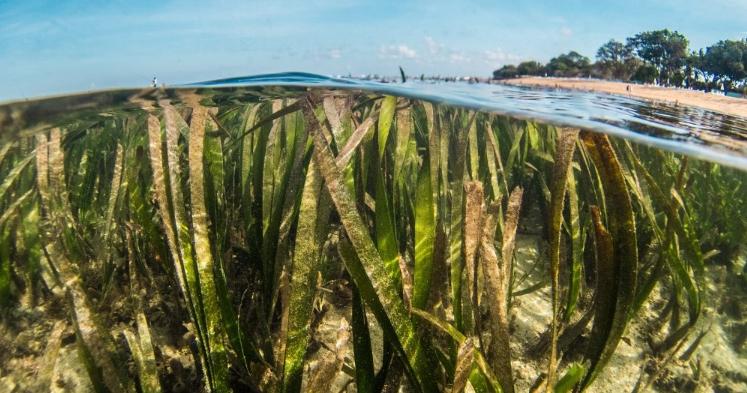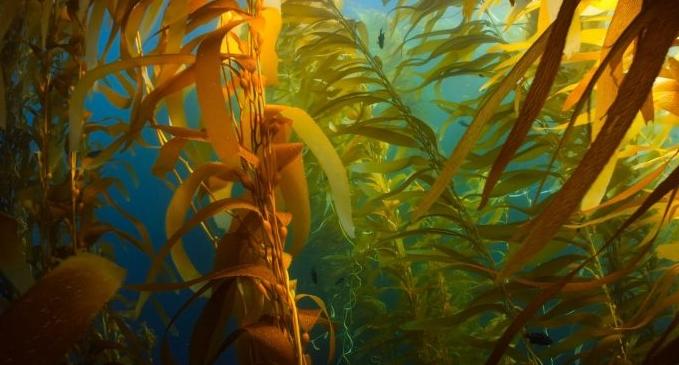Christopher Pearce, Principal Marine Geoscientist at the National Oceanography Centre, delves into the possibilities and obstacles of employing ocean-based carbon dioxide removal techniques as a means to curtail greenhouse gas emissions.
The widespread adoption of net zero targets and emission reduction strategies has become a common goal in our quest to mitigate future global warming. It’s widely recognized that achieving the Paris Agreement’s objective of limiting the temperature increase to below 2˚C above pre-industrial levels requires substantial and swift reductions in greenhouse gas emissions.
Nevertheless, it’s important to recognize that simply reducing emissions might not be sufficient to achieve these crucial targets.
Scaling up carbon dioxide removal is of utmost urgency
Meeting the temperature goal set by the Paris Agreement requires active removal of hundreds of billions of tonnes of carbon dioxide (CO2) from the atmosphere in the coming century, as indicated by the IPCC’s recent climate projection scenarios.
Carbon dioxide removal (CDR) processes involve extracting atmospheric carbon and storing it in geological, terrestrial, or marine reservoirs through the application or improvement of biological or chemical techniques.
Numerous CDR approaches have been suggested, including techniques like Direct Air Carbon Capture and Storage (DACCS), Bioenergy with Carbon Capture and Storage (BECCS), Biochar, and Enhanced Weathering.
Nevertheless, only a handful of these methods are currently being applied at large-scale levels, leading to a considerable disparity between the achieved CDR and the required amount to effectively curb global warming within acceptable thresholds.
The ocean as a potent carbon sink

Leveraging the vast potential of the ocean as a carbon dioxide removal solution is crucial, considering it blankets 70% of the Earth’s surface and has already absorbed about a quarter of all human-induced CO2 emissions since the industrial revolution.
Even slight improvements in the rate of CO2 absorption into this vast carbon reservoir could lead to a substantial reduction of atmospheric CO2 levels. Some proposed approaches even have the potential to remove over a billion tonnes of atmospheric CO2 per year.
Enhancing our comprehension of the actual sequestration efficiency of ocean-based carbon dioxide removal (oCDR) techniques, along with their environmental co-benefits or impacts, has thus become a focal point of considerable scientific and commercial interest.
Unleashing the CO2 Absorption Potential of Seawater
Ocean Alkalinity Enhancement (OAE) is emerging as one of the most promising ocean-based carbon dioxide removal (oCDR) techniques. This abiotic approach aims to elevate the CO2 absorption potential of seawater by enhancing its pH.
The inferred effectiveness, scalability, and permanence of OAE, along with the flexibility in generating alkalinity, provide distinct advantages over certain other ocean-based carbon dioxide removal methods. Additionally, OAE shows potential for mitigating the adverse effects of ocean acidification.
At present, there is limited understanding of the effects of enhanced alkalinity on marine ecosystems and environments. Furthermore, our capacity to effectively monitor these impacts in the open ocean remains untested.
Various companies, including Planetary and Vesta, along with research programs like OceanNETS and CDRmare, are currently undertaking small-scale field trials and experiments to further our knowledge of Ocean Alkalinity Enhancement (OAE) implementation and its effects. While these efforts are contributing to advancements, several uncertainties remain regarding the efficacy of carbon sequestration, biogeochemical and ecological consequences, and the ability to observe and monitor the outcomes of this approach.
Growing Interest in Marine Afforestation and Deposition
Among the various ocean-based carbon dioxide removal methods, one approach gaining attention involves enhancing the production and burial of macroalgae. Seaweeds like Kelp and Sargassum naturally absorb dissolved CO2 from seawater through photosynthesis during their growth. Sinking these macroalgae in deep sea environments has the potential to prevent or substantially delay the release of carbon back into the exchangeable surface reservoirs, contributing to carbon dioxide removal efforts.
Seaweed cultivation has evolved into a thriving multi-billion dollar industry, catering to animal and human food consumption, as well as biofuels production. Companies such as Running Tide, Seafields, Seaweed Generation, and Kelp Blue are now exploring the possibility of expanding this sector further, tapping into its potential as an effective ocean-based carbon dioxide removal method.
While marine algae cultivation shows promise as a carbon dioxide removal technique, several critical knowledge gaps must be addressed before scaling it up for substantial CO2 drawdown. Research priorities include better understanding the sequestration efficiency and nutrient needs for enhancing macroalgae growth, as well as evaluating the environmental impacts and long-term permanence of the carbon deposited in deep ocean environments.
The need for regulatory guidelines and codes of conduct

In addition to Ocean Alkalinity Enhancement and marine afforestation, there are several other proposed ocean-based carbon dioxide removal techniques. These include nutrient fertilization, artificial upwelling, and downwelling, ecosystem recovery, coastal blue carbon management, and electrochemical approaches combined with carbon capture and storage. These innovative methods hold potential in contributing to global efforts to combat climate change and achieve carbon neutrality.
Various ocean-based carbon dioxide removal (oCDR) techniques, including Ocean Alkalinity Enhancement and marine afforestation, present promising solutions to combat climate change. However, their successful implementation at scale requires resolving specific development needs and knowledge gaps. Ocean Visions’ oCDR roadmaps and the National Academies of Sciences, Engineering, and Medicine oCDR Research Strategy highlight the importance of addressing these gaps. Furthermore, legal, ethical, and political considerations also play a crucial role in determining the true implementation potential and scalability of each oCDR technique. Overcoming these challenges is essential to harness the full potential of oCDR in our fight against climate change.
To ensure the responsible advancement of ocean-based carbon dioxide removal (oCDR) techniques, well-defined regulatory frameworks are essential at both national and international levels. These frameworks will help mitigate environmental risks and instill confidence in policymakers and investors. Additionally, implementing codes of conduct is crucial to ensure the active participation of all communities and stakeholders in the research and development of oCDR methods. By promoting inclusivity and responsible practices, we can collectively work towards harnessing the potential of oCDR while safeguarding our oceans and ecosystems.
Although international guidelines for oCDR are in their early stages of development, more efforts are needed to foster coordination, research, and engagement. It is crucial to ensure that oCDR advances in an inclusive, representative, and equitable manner, guided by evidence-based assessments. By collaboratively addressing these needs, we can pave the way for a sustainable and responsible deployment of ocean-based carbon dioxide removal technologies.
Promoting Responsible Advancements in oCDR through Careful Stewardship, Collaboration, and Research
Accelerating our comprehension of the feasibility, location, and effective implementation of ocean-based carbon dioxide removal strategies necessitates interdisciplinary collaborations that unite expertise from various sectors, fostering mutually beneficial advancements.
The newly launched SEAO2-CDR project brings together prominent research institutions specializing in marine, climate policy, economic, and political science, along with an international ocean business alliance. The aim is to develop the necessary mechanisms, tools, and guidelines to responsibly and transparently deploy ocean-based carbon dioxide removal techniques (oCDR).
The Horizon Europe-funded project will be delivered through three core themes that:
- Define the essential system boundaries, processes, material, and energy flows of various ocean-based carbon dioxide removal approaches, and determine their temporal and spatial monitoring needs and mechanisms.
- Develop social, regulatory, political, economic, and ethical frameworks to facilitate the widespread adoption of oCDR technologies at scale.
- Improve our comprehension of practical implementation policies and pathways through comprehensive assessments of system-level impacts.
To achieve global climatic targets and fulfill commitments in the coming decades, a diverse range of CDR approaches must be implemented and expanded. The ocean holds significant potential in contributing to these CDR endeavors. However, it is essential to exercise careful stewardship, foster close collaboration, and conduct further research to ensure that ocean-based carbon dioxide removal techniques can be deployed responsibly. Striking a balance between environmental safety, social acceptance, and economic viability is crucial in utilizing these approaches effectively and sustainably.

